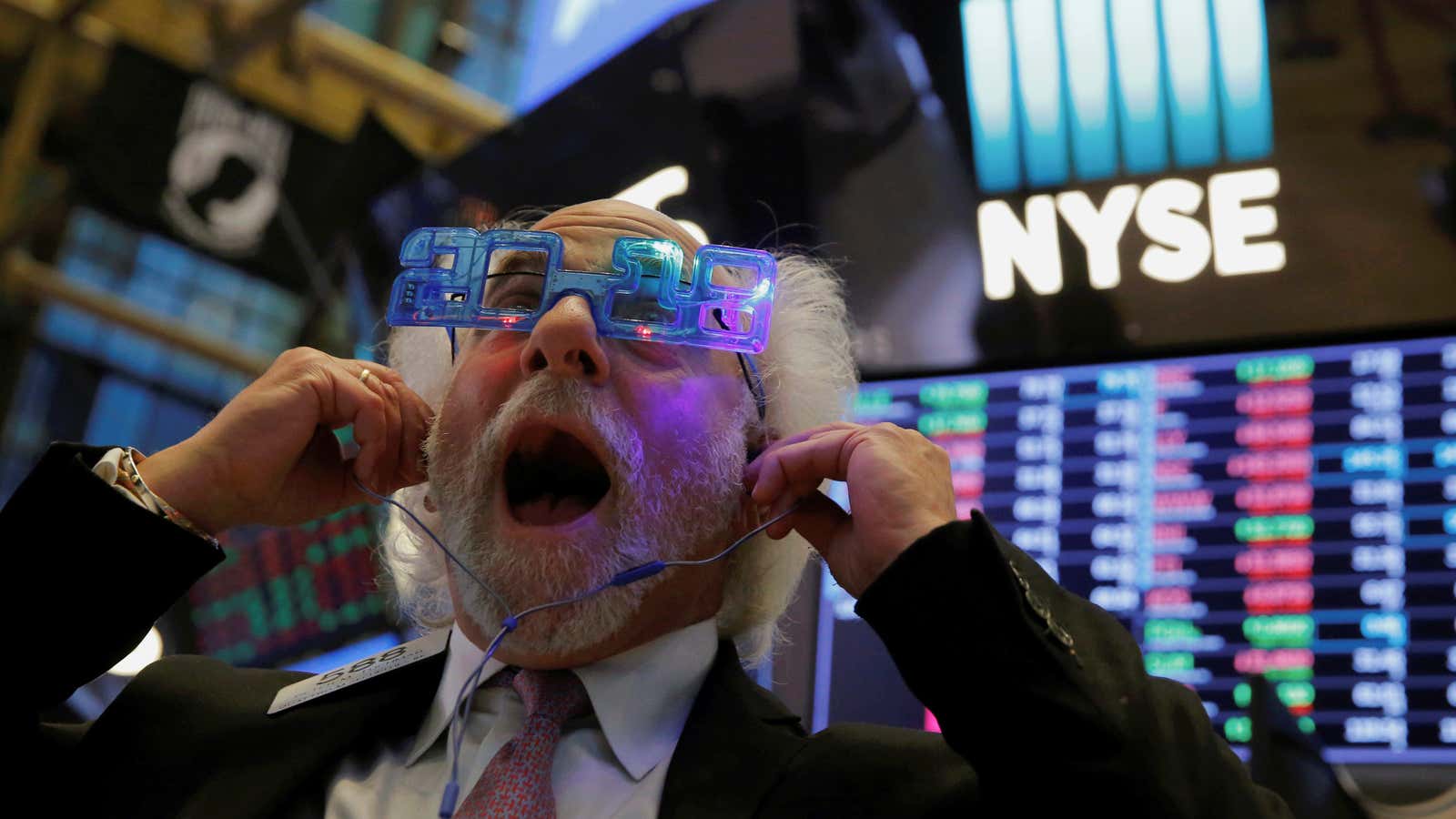Fears over Donald Trump’s tariffs seem to have sent markets tumbling toward their next “correction”—the term economists and traders like to use to describe a 10% or higher decline from a stock index’s most recent peak.
We haven’t been in this territory since Feb. 8. A whole six weeks ago.
As of today (March 22), the Dow Jones industrial average, the index of 30 large, publicly traded American companies, is just .01% away from a correction—down 9.99% from its peak (paywall).
The S&P 500, a larger index of US companies, is flirting with a correction, too. More than half its 500 companies are down at least 10%. One of them, General Electric—valued at more than $115 billion—is down 55% from its most recent high.
While Trump’s tariff plans are cited as the most immediate reason for the market’s meltdown, other events, like Facebook’s data-harvesting scandal and Jerome Powell’s more hawkish-than-expected Fed policy announcement, have investors on edge.
It’s easy to feel panicked when the market’s in the red. Scrolling down the stocks in correction territory is endless and dizzying. (See for yourself.)
Still, corrections are more common than you may think. Until more recent years, they happened every 18 months or so, and lasted for three to four more. They’re even considered healthy: Corrections can stem ill-informed, speculative frenzies and let new investors, with less capital, enter the market at lower prices.
History suggests the unusual thing isn’t the looming market correction, but rather, the cushy three years investors had before this one.
